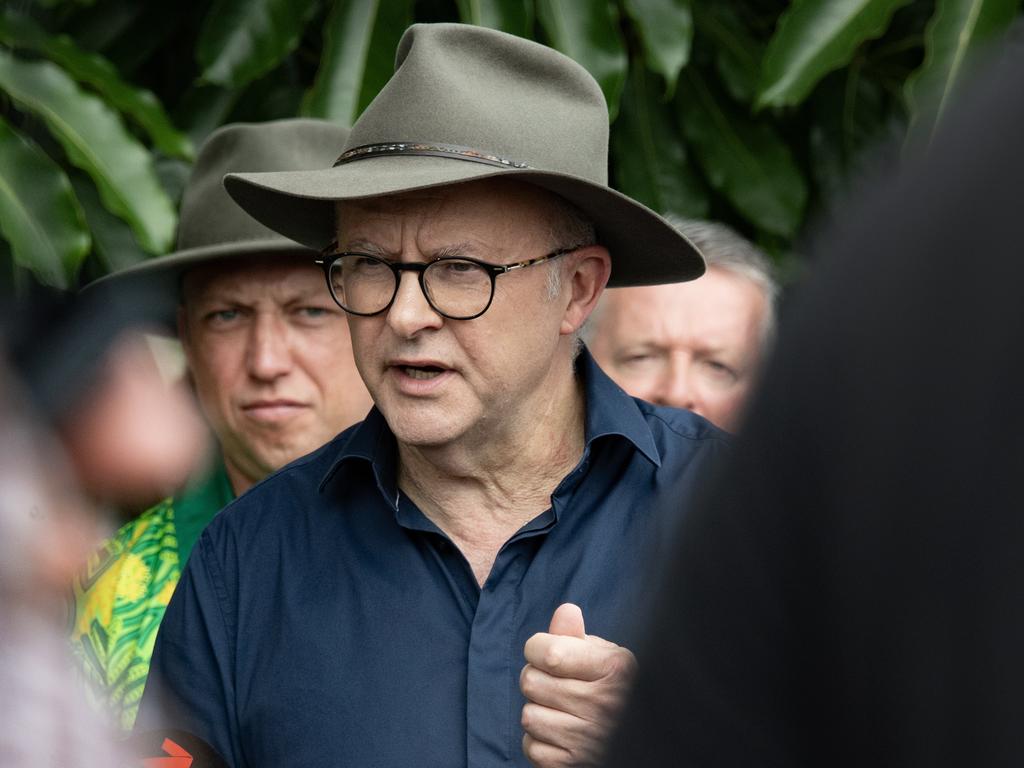Seat changes could make or break Albo Labor
If Labor is to retain government, it will need to stave off Coalition marginal seat campaigns in these three key states: NSW, Victoria and Western Australia.
While that may seem a somewhat obvious observation – between them these states constitute the lion’s share of the national population – it is particularly pertinent now because all three are facing electoral redistributions. And not just tinkering at the edges – a new seat will be created in WA and two seats will be abolished, one in each of NSW and Victoria. That means the adjustments will be significant. The total number of seats for the House of Representatives will fall from 151 to 150.
If Labor is to retain government, it will need to stave off Coalition marginal seat campaigns in these three key states. Failure to do so could mean the government lost its working majority or, worse, was defeated after just one term. The reality of how narrow Labor’s 2022 win really was is dawning on Labor strategists. That said, the last one-term government to fail at re-election was the Scullin Labor government in 1931. Voters don’t like admitting they got it wrong so soon after changing a government.
Labor won a swag of seats in the west at the 2022 federal election, partly off the back of premier Mark McGowan’s popularity. The state Liberals had been reduced to just two seats in the Legislative Assembly at the WA election a year earlier. McGowan took centre stage at the federal Labor launch, which Anthony Albanese wisely insisted on holding in WA for the first time despite internal opposition. It paid off – Labor picked up the seats of Swan, Hasluck, Pearce and Tangney. The Liberals also lost Curtin to a teal.
The results were the reason the Albanese opposition was able to form majority government. If the west swings back to the conservatives next year, Labor’s majority surely will be lost unless pick-ups can be found elsewhere. Which brings us back to the looming redistributions across WA, NSW and Victoria.
What the redistribution holds for both major parties in WA could play a crucial role in how the wider electoral results pan out. Will the new seat allocated to WA be notionally Labor or Liberal? Will boundary changes shore up Labor seats won in 2022? Or will the new boundary configurations make life harder for the Labor class of 2022?
Redistributions tend to have the greatest impact on mortgage-belt growth corridors because that’s where populations change most rapidly. Such areas tend to be dominated by marginal seats: electorates Peter Dutton hopes will desert the government in the wake of worsening economic conditions.
While WA hosts one teal independent, the rest are based in NSW and Victoria. Suffice to say that without picking up teal seats the best the Opposition Leader can hope for is to deny Labor a majority, but without the ability of the Coalition to form a government of its own. The Prime Minister still will be able to cobble together enough support for a second term, however messy such arrangements might be. A Coalition majority requires winning back seats such as Kooyong, Goldstein, North Sydney and Mackellar. This seems unlikely, especially when Dutton is focusing his attention on outer metropolitan marginal seats. Like it or not, the one-time base of the Liberal Party no longer supports it, pulling previously blue-ribbon electorates into the teal web. It’s possible the economic problems we are facing ameliorate this, but probably not.
Redistributions in NSW and Victoria could open up opportunities for either side. Labor has long dominated in Victoria, including winning the Aston by-election. What happens at the looming Dunkley by-election will be required viewing. But how the configuration of seats changes thereafter with the redistribution will shine a light on whether the opposition can win back a state that once was seen as the jewel in the crown of the Liberal Party.
Certainly the fallout since Victorian premier Daniel Andrews retired hasn’t helped the Labor brand. Simply put, he overstayed his welcome.
Which leaves us with NSW to look at among the key states. There has been plenty of speculation that teal seats might be heavily affected by the redistributions, perhaps resulting in one of them being abolished.
Predicting what the Australian Electoral Commission does is fraught with danger, but changes in NSW will adjust the configuration of seats across western Sydney. This could favour Dutton as he pivots the Liberals’ focus.
Of the remaining states, there aren’t likely to be many seats changing hands. Tasmania is small with only five federal seats, split evenly between the major parties and Andrew Wilkie holding the fifth. Unless Wilkie retires it’s hard to see Labor picking up seats there, even though Bass and Braddon often swing between the majors. The Liberals picking up an extra Tasmanian seat also seems unlikely.
South Australian seats seem rigidly split between the major parties, with only Boothby up for grabs. And in Queensland it is hard to see the government winning too many extra seats, even though Labor holds only five of the state’s 30 seats and the LNP holds a whopping 21. Dutton is a Queenslander and it is a parochial state. Kevin Rudd used his Queensland origins to good effect back in 2007.
Besides, with the Greens having picked up three seats at the 2022 federal election, Labor needs to be mindful of its left flank in a state that more broadly prefers to support conservative credentials.
It’s a difficult nut to crack for Albanese, but history suggests he remains the favourite to win the next election. It may be an ugly victory, however. The problem with such an outcome is that reform will die at the altar of easy re-elections. Bold policy changes will be seen as too difficult. Australians will give up on their political leaders, accepting they are not capable of rising to challenges beyond serving out an additional three years.
Peter van Onselen is a professor of politics and public policy at the University of Western Australia and Griffith University.







The next federal election will be decided in three key battlegrounds: NSW, Victoria and Western Australia.